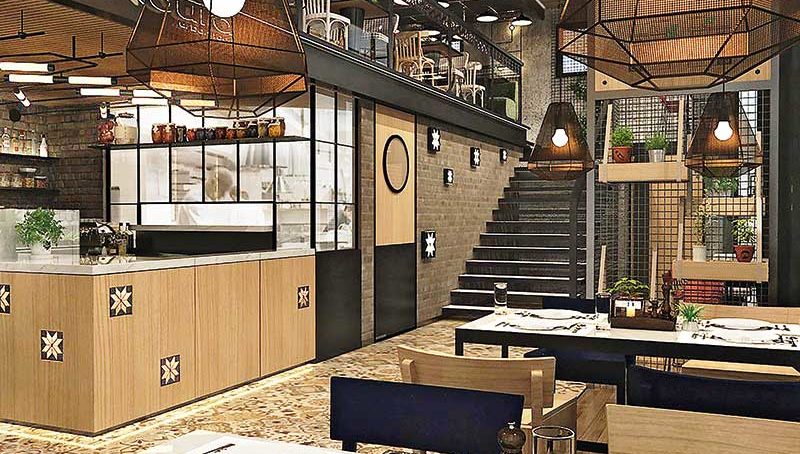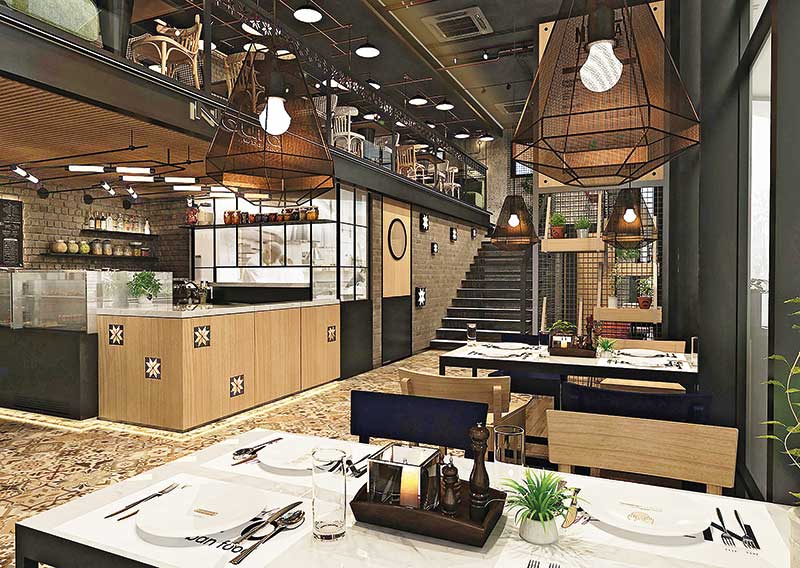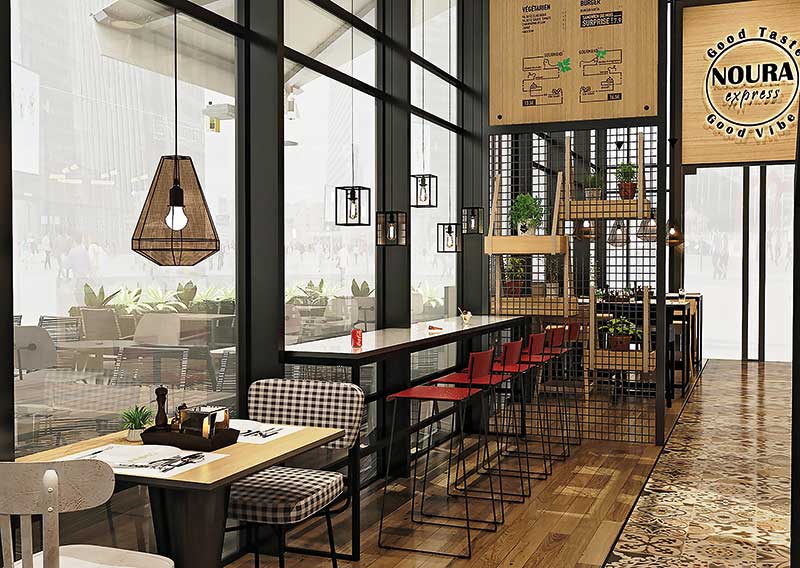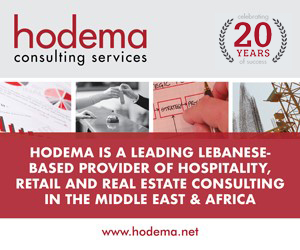When it comes to transposing an idea into a realistic, tangible concept that holds true and flows seamlessly, choosing the right architecture firm becomes central to the entire creation process. However, add to that the rise in popularity of oriental design and fast-casual eateries, and an already-challenging process is set to become even trickier. Fortunately, Antoine Tabet Associates showed themselves more than capable of executing a project that would meet these and other specific criteria


Not only did they manage to marry these challenges, but in so doing, they created a relatively new concept of eatery. HN met the man at the firm’s helm to discuss the thought and planning that went into designing a new prototype for the Noura restaurant chain, a concept that has been operating in Paris since 1989.
Despite being an architect rather than an interior designer, Tabet ensures he is involved in every single detail of every project he chooses to take on. In this particular case, after careful study of the brand’s history and its owners’ desire to create a new offshoot version, targeting the Quick Service Restaurant (QSR) market, a unique idea was conceived on paper, which was then beautifully executed.
Tradition meets the 21st century
“The challenge was to have a Lebanese architect revisit the space in the hope of instilling an authentic oriental spirit, while employing a more fitting contemporary design,” Tabet explained.
In order to ensure maximum flow through the eatery, Noura’s owners acquired a space right next to L’Arche de la Défense, an area where thousands of people work. After two months of operations, the eatery has proved to be so successful that plans are already being drawn up to reproduce the design in preparation for new outlets outside of Paris, throughout Europe.
Elaborating on what makes the space so inviting, Tabet said, “We borrowed a very common Lebanese pattern found in tiles traditionally used in the construction of old houses and implemented that pattern in custom-tailored light fixtures and other types of art. Even the chairs used are reminiscent of the old Lebanese glass coffee houses.”
One of the challenges was to ensure that the numerous elements incorporated in the design worked together, rather than against each other, as Tabet explained. “The challenge was how to prevent any one component from dominating the design,” he acknowledged. “After all, you cannot have a restaurant in Europe with a predominantly Lebanese identity, as that will alienate some foreign guests who will find it difficult to relate to the concept.”
To avoid this potential hurdle, instantly recognizable urban architectural elements that are found throughout the world and therefore familiar to most customers were incorporated. “We used glass, metal and wood, in addition to leaving the ceilings exposed with electro-mechanical wires, ducts and tubes visible, though not protruding,” Tabet said. “In other words, the design also incorporates elements habitually found in industrial architecture.”
First, the groundwork was laid, paving the way for the oriental elements to be incorporated. These included traditional Lebanese tiles, chandeliers, as well as tables and chairs that were reminiscent of those found in the popular coffee shops of the 1960s.
“We went a step further and added small flowerpots traditionally found on the balconies of Lebanese homes,” Tabet noted. “In addition, we introduced floor-to-ceiling shelves containing various foods, which remind foreigners of a pantry of sorts, while evoking the idea of winter food storage rooms among Arabs. As a final touch, we decorated the wall spaces with old pictures from Lebanon’s golden era.”
Function and design of the kitchen
In keeping with the modern restaurant setup, an open kitchen was designed to not only emphasize cleanliness, but to also showcase the colorful dishes available on the menu.
Delving deeper into the intricacies of the design, Tabet explained, “To further accommodate the concept, we utilized refrigerated glass display cases. In this way, visitors on a short, 30-minute lunchbreak were offered an easier way to pick and choose items, including some that they may not be familiar with, but like the look of.”
Turning to the challenges faced, Tabet said the key issue was designing the space to accommodate operations around a very limited time period, in which many orders would be processed in under an hour.
“The design needed to be modern, but also authentically oriental and efficient, allowing for visitors to be served as quickly as possible, similar to a fast-food outlet,” he said. “To resolve and speed up the daily operations, as well as internal flow, we installed three ordering touchscreens next to the entrance that send individual requests straight to the kitchen, eliminating time wasted at the check-out counter.”
Tabet added that the benefits of the system are evident, with results showing that in the span of two hours, the restaurant is processing about 250 individual orders.
Functional seating space
To cater to all types of visitors, the restaurant also has a high-stool seating area located in one corner, offering diners a comfortable space to eat at their own pace. Visitors who would like to enjoy the fresh air while having a bite to eat can choose a spot in the outside seating area, which accommodates 60 people. Alternatively, for those who have more time on their hands, the restaurant’s upstairs eating area is the ideal place to enjoy a meal in peace and quiet.
This highly efficient, multi-functional space represents the updated version of the Noura restaurant chain, which, while originally a fine-dining outlet, today also caters to individuals with a faster-paced lifestyle.
“The new version is Noura’s answer to the trending street-food scene, elevated to a new level in style. It’s our vision, related to the increasingly popular fast-casual eating-out category,” Tabet said. “It’s worth noting that these outlets are operating at a higher rate and have proven so successful, that plans are already being drawn up to further expand in similar areas to accommodate this overwhelming flow.”
Tabet is confident that this QSR outlet holds plenty of potential. “It is an urban, industrial Lebanese eatery, which we believe will set the pace for others to follow,” he said.

Antoine Tabet Associates














